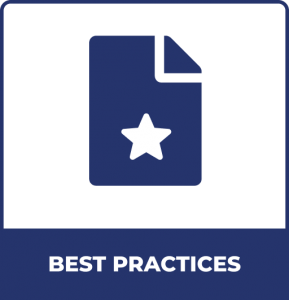A comprehensive training manual that covers several aspects of use of force, medical considerations regarding the prisoners mental health, personal safety, communication, reaction, vulnerable body areas, defensive techniques, disarming techniques, prisoner removal, moving a prisoner.
A. TRAINING GUIDELINES FOR C&R INSTRUCTORS
1.1 Planning the training session
1.2 Preparation for the training
1.3 Classroom section
1.4 Warming up
1.5 Practical teaching techniques
B. USE OF FORCE PRINCIPLES GUIDELINES ON THE USE OF FORCE
1.1 The law and Prison Service Orders
1.2 Handling confrontational situations
C. MEDICAL CONSIDERATIONS
1.1 Medical warning signs
1.2 Positional asphyxia
1.3 Excited delirium
1.4 Psychosis
1.5 Sickle cell disease
D. PERSONAL SAFETY
1. COMMUNICATION
1.1 Communication skills
1.2 Intrusion of personal space
1.3 Non-verbal communication
1.4 Managing aggression
1.5 Defusion strategy
2. REACTION DISTANCES
2.1 Communication / long range
2.2 Intermediate range
2.3 Close range
2.4 Contact
2.5 Ground
2.6 Protective Stance
2.7 Movement
3. VULNERABLE BODY AREAS
4. DEFENSIVE TECHNIQUES
4.1 Simple breakaways
4.2 Defensive strikes
4.3 Defence against kicks
4.4 Ground
4.5 Attacks from the rear
4.6 Batons
5. DISARMING TECHNIQUES
5.1 Defence against improvised weapons
5.2 Edged weapons
5.3 Defence against firearms
6. SCENARIO BASED TRAINING E. CONTROL & RESTRAINT BASIC TECHNIQUES
1. PLANNED REMOVAL
1.1 The role of the C&R supervisor
1.2 The role of healthcare staff
1.3 Formation of a three officer team
1.4 Responsibilities of the Number
1 1.5 Responsibilities of Numbers 2 and 3
1.6 Arm locks
1.7 Final lock
1.8 Application of ratchet handcuffs (standing)
1.9 Prisoner on the ground (prone); 1.10 Application of ratchet handcuffs (prone); 1.11 From the rear
1.12 Prisoner on the ground (supine); 1.13 Application of ratchet handcuffs (supine)
2. CONTROL TECHNIQUES
2.1 Thumb-lock standing; 2.2 Floor; 2.3 Leg restraint
3. ARMED PRISONER REMOVAL
3.1 The Number 1’s responsibilities
3.2 Approach to the prisoner
3.3 The Number 1’s responsibilities on contact in a confined space
3.4 The Number 2’s and 3’s responsibilities
3.5 The 2’s and 3’s responsibilities on contact in a confined space
3.6 Removal of the shield
3.7 Contact with the prisoner in an open area
3.8 Conversion to the final lock
4. UNPLANNED C&R
4.1 Introduction
4.2 The role of the supervisor
4.3 Compliant prisoner
4.4 Non-compliant prisoner
5. MOVING A PRISONER
5.1 The role of the supervisor
5.2 Passive prisoner
5.3 De-escalation
5.4 Prisoner in final locks
5.5 Prisoner in ratchet handcuffs
5.6 Moving a prisoner against their will
6. RELOCATION
6.1 The role of the supervisor
6.2 Passive prisoner
6.3 Prisoner in final locks
6.4 Prisoner in ratchet handcuffs
6.5 Full search under restraint
6.6 Body belt
6.7 Pregnant prisoners
7. CELLULAR VEHICLES
7.1 Moving a prisoner
7.2 Relocation
7.3 Planned removal
8. SCENARIO BASED TRAINING F. USE OF FORCE REPORT WRITING
1.1 Introduction
1.2 Supervisor
1.3 All staff involved in the use of force
Royal Newfoundland constabulary
Safer Communities through Policing Excellence (s.d.). Use of Force Training Manual. Royal Newfoundland constabulary. Microsoft Word – Response to Summons to Produce.docx (ciddd.ca)


